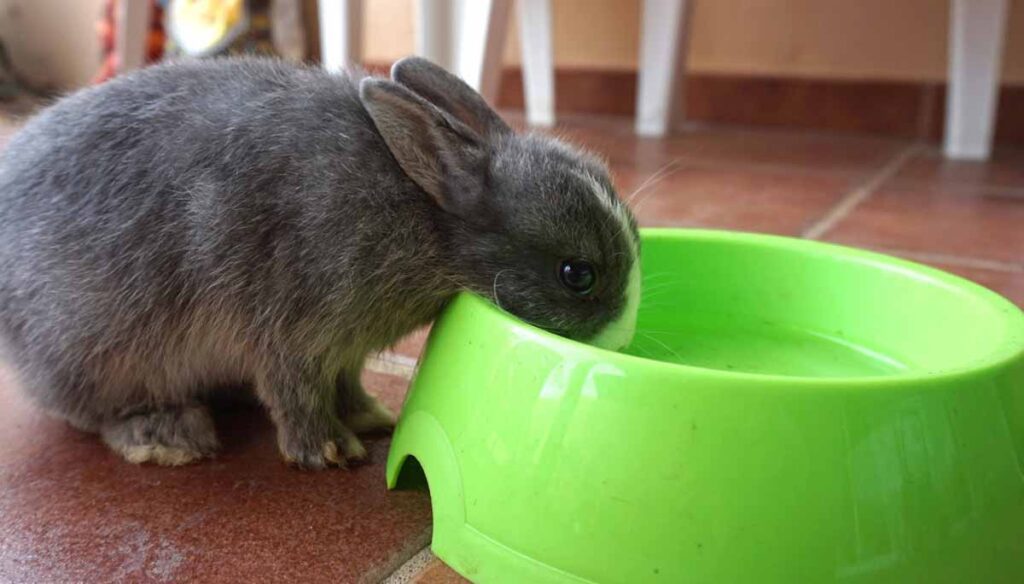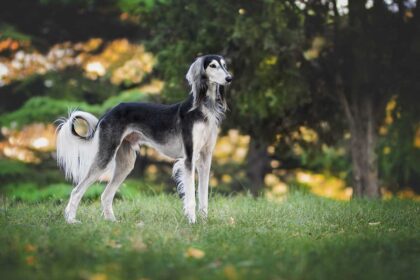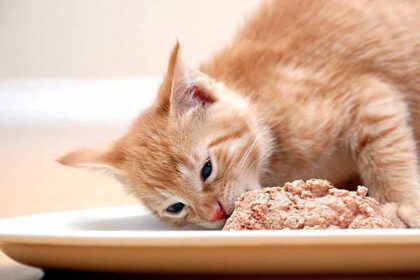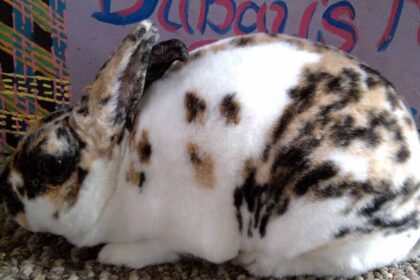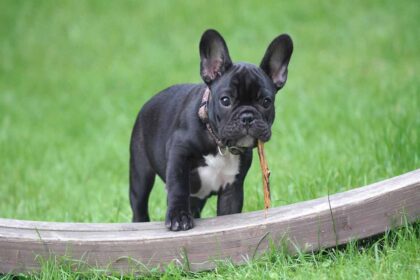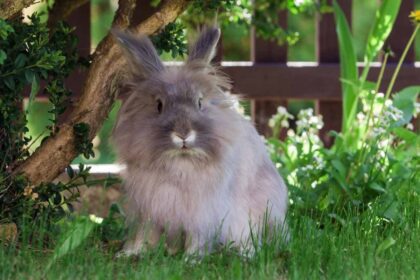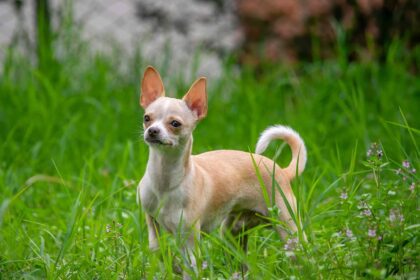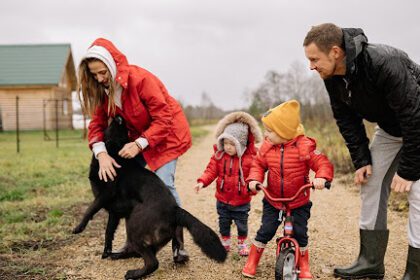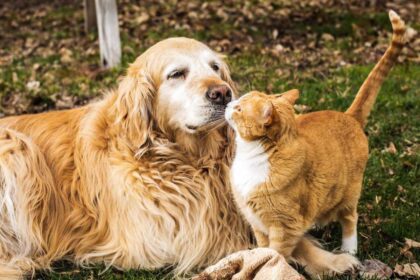Our furry friends become increasingly at risk as the summer sun grows hotter. Rabbits are wonderful pets to have around during every month of the year because they don’t sweat, and therefore, are more prone to heat stroke in hot weather. Temperatures exceeding 80°F (27°C) can quickly make rabbits uncomfortable and even cause life-threatening problems.
Rabbits have thick fur and are at risk of heatstroke during summer. According to American Society for the Prevention of Cruelty to Animals (ASPCA), rabbits tend to suffer from heatstroke more than many other animals due to their lack of ability to sweat as well as regulate body temperatures efficiently.
In this article, there is a necessity of having ways of keeping them cool so that no heat associated diseases occur.
What Temperature is too Hot for Rabbits?
Rabbits cannot tolerate heat so they might get heat stress very easily and quickly to Heat Stroke. Rabbits generally do not do well at temperatures above 85°F (29°C). The best environment for them is between 60-70°F (15-21°C), so they can stay comfortable and safe.
During the hot months, make sure they have an area of shade to lie in and keep them well watered and with some air flow.
How to Keep Rabbits Cool
Provided Natural Shade
 Shade for rabbits is very important to their survival, especially when the weather is warmer. Rabbits are highly prone to heat stress and therefore shading their housing will help maintain a good temperature for them. Outdoor hutches or enclosures with roofs or covers that stop sunlight are an option.
Shade for rabbits is very important to their survival, especially when the weather is warmer. Rabbits are highly prone to heat stress and therefore shading their housing will help maintain a good temperature for them. Outdoor hutches or enclosures with roofs or covers that stop sunlight are an option.
When indoors, keep the rabbit’s cage away from windows facing direct sunlight. You can also use shade cloths/tarps/umbrellas outside in your runs so as to make shaded areas. Trees should be planted around the area or big potted plants may be put there to provide natural shade, too.
Make sure that there is sufficient ventilation to prevent overheating of the rabbits’ cages.
Offer Fresh Cool water
 Rabbits require cold, fresh water especially during hot weather. Use heavy ceramic or metal dishes to keep the water cool and prevent it from tipping over. Frequently refill them with water and add some ice cubes in case of hot days. Also, make sure that no contamination is present in the water.
Rabbits require cold, fresh water especially during hot weather. Use heavy ceramic or metal dishes to keep the water cool and prevent it from tipping over. Frequently refill them with water and add some ice cubes in case of hot days. Also, make sure that no contamination is present in the water.
The hydration will help avert heat stress as well as facilitate general wellness. Fresh, cool water should always be given priority for your rabbits during summer season.
Frozen Treats
 Hot weather is very dangerous to rabbits, and they should be given frozen food to keep them cool and entertained. Some simple choices include freezing berries or small pieces of apple. Chunks of vegetables can also be put in the fridge or on an ice block made with rabbit-friendly herbs.
Hot weather is very dangerous to rabbits, and they should be given frozen food to keep them cool and entertained. Some simple choices include freezing berries or small pieces of apple. Chunks of vegetables can also be put in the fridge or on an ice block made with rabbit-friendly herbs.
Give them treats that are good for them every time you do so. These cold snacks prevent the animals from becoming excessively hot, add a twist to their normal eating habits, and are a sweet way of cooling down your pets.
Provided a Damp Towels
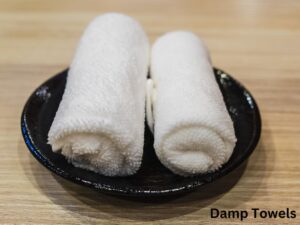 When the weather is hot, a wet towel can be useful for cooling a rabbit. Just moisten it with cold water and squeeze off the surplus before draping it over their cage or hutch. The temperatures drop through the evaporative cooling of water molecules in the atmosphere.
When the weather is hot, a wet towel can be useful for cooling a rabbit. Just moisten it with cold water and squeeze off the surplus before draping it over their cage or hutch. The temperatures drop through the evaporative cooling of water molecules in the atmosphere.
Also, you can spread it out on a cool, damp towel. Check that you do not make it too wet, as this may cause distress to them. This easy means will prevent heat stress, thereby allowing “your rabbits to live comfortably in an overheated environment.”
Groom Your Rabbits
 During summer, grooming is particularly related for rabbits to keep them comfortable and cool. Brushing is the process by which excessive hairs are removed hence avoiding such mats thus allowing air movement over their body.
During summer, grooming is particularly related for rabbits to keep them comfortable and cool. Brushing is the process by which excessive hairs are removed hence avoiding such mats thus allowing air movement over their body.
Ensure that special attention is given to area of rabbit’s hair prone to tangling like behind its ear or under its jaw. This will prevent them from getting stuck in carpet or bedding material; therefore, it requires being done regularly.
In addition, fur flystrike common especially during warmer months should be checked. Through this practice, your rabbits regulate their body temperatures well and reduce chances of suffering from heat illnesses hence they remain happy and healthy through the period of summer months.
How to Keep Indoor Rabbits Cool
Air Condition
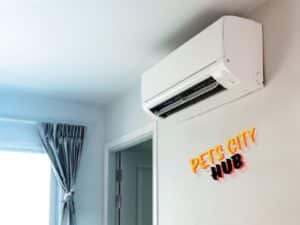 Indoor rabbits can be saved by air conditioning during summer. This is because heat stress affects them more than any other pet. A good air conditioner temperature is cool but not very cold, commonly between 60-70 degrees F (15-21 degrees C). Keep air moving in the room without drafts blowing directly on their places of stay.
Indoor rabbits can be saved by air conditioning during summer. This is because heat stress affects them more than any other pet. A good air conditioner temperature is cool but not very cold, commonly between 60-70 degrees F (15-21 degrees C). Keep air moving in the room without drafts blowing directly on their places of stay.
The function of an air conditioner is to prevent overheating of the indoors and make sure that it provides a conducive environment for rabbits’ well-being over summer periods.
Ceiling Fans
 During the summer, indoor rabbits can be helped to keep cool by ceiling fans. Nevertheless, one should use them with caution. Set the fan at a slow speed so as to avoid blowing air down on the bunnies directly or drafts that can affect their respiratory system and feel uncomfortable. Put it in such a way that it gently stirs the air around but doesn’t blow directly into the rabbit’s cage.
During the summer, indoor rabbits can be helped to keep cool by ceiling fans. Nevertheless, one should use them with caution. Set the fan at a slow speed so as to avoid blowing air down on the bunnies directly or drafts that can affect their respiratory system and feel uncomfortable. Put it in such a way that it gently stirs the air around but doesn’t blow directly into the rabbit’s cage.
Observe your rabbits closely and any signs of stress or discomfort and then vary the fan’s position or speed if need arises. When used properly, these fans help to increase airflow which makes your pet comfortable during hot weather.
Open Windows
 As is evident, open windows bring in fresh air but it is important to be careful with rabbits during summer. Open windows with direct drafts can cause problems to rabbits’ breathing and make them uncomfortable. Put up screens on your windows when you want to leave it open just so that the rabbit will not escape or get injured accidentally.
As is evident, open windows bring in fresh air but it is important to be careful with rabbits during summer. Open windows with direct drafts can cause problems to rabbits’ breathing and make them uncomfortable. Put up screens on your windows when you want to leave it open just so that the rabbit will not escape or get injured accidentally.
Move your rabbit’s house or hutch from any drafty areas which are likely to chill them. Keep a good check of temperature and air movement inside the room to have a cozy atmosphere. In short, whilst fresh air is healthy for us all, open windows should be considered after the well-being of our rabbits.
Reduce Sunlight
 For a rabbit’s welfare, there is need to minimize its exposure to the sun during summer. Direct sunlight can cause overheating in rabbits, leading to heat stress. Locate the enclosures in cool areas or use curtains on windows.
For a rabbit’s welfare, there is need to minimize its exposure to the sun during summer. Direct sunlight can cause overheating in rabbits, leading to heat stress. Locate the enclosures in cool areas or use curtains on windows.
Be wary of temperatures that might disturb their comfort and prevent them from becoming too hot. In this manner, you will secure your rabbits’ health since it prevents them from getting summer diseases related to excess temperature and heat stroke.
Cool Surfaces
 During the summer, it is very important that rabbits are kept in a cool environment. You can alleviate this by putting some ceramic tiles or marble slabs inside their homes where they can lie on them. They maintain low temperatures which reduces heat.
During the summer, it is very important that rabbits are kept in a cool environment. You can alleviate this by putting some ceramic tiles or marble slabs inside their homes where they can lie on them. They maintain low temperatures which reduces heat.
Make sure that they have such surfaces all day long to aid in temperature regulation. Cold surfaces deter overheating and promote your rabbits’ welfare in hot seasons.
What are The Risks of Hot Weather for Rabbits?
Heatstroke in Rabbits
Heatstroke in rabbits is a severe and potentially life-threatening condition, which occurs due to prolonged exposure to high temperatures. Heat stroke affects rabbits with great ease because they do not sweat or regulate their body temperature effectively.
Symptoms of Heatstroke in Rabbits
- Rapid breathing or panting
- Lethargy or weakness
- Drooling or excessive salivation
- Flushed or red skin
- Ears feel hot to the touch
- Unresponsiveness or disorientation
- Convulsions or seizures
- Collapse or loss of consciousness
Heat stroke is an urgent medical case and fast action is needed. If any of these signs are detected in your rabbit, move them immediately to a cool dark area, provide water for drinking and apply cold water on their fur. Call a veterinarian for further advice and treatment as soon as possible.
Dehydration in Rabbits
Dehydration may take place in a rabbit when it loses more water than it drinks and so disturbs the balance of water in its body. Dehydration is possible for a rabbit due to some reasons such as hot weather, inadequate consumption of water, disease or diarrhea.
Symptoms of Dehydration in Rabbits
- Sunken eyes
- Dry or tacky gums
- Loss of skin elasticity (the skin may tent when gently pulled)
- Lethargy or weakness
- Reduced or absent urine output
- Decreased appetite
- Rapid breathing or panting
Dehydration is a serious condition that should be given immediate medical attention. If you suspect your rabbit is suffering from dehydration, provide them with freshwater and call the veterinary doctor to examine it further or treat.
Severely dehydrated rabbits may require intravenous fluids for rehydration. To keep a rabbit from becoming dehydrated, see to it that it has water available at all times, especially during hot weather conditions and when sick.
Heat Stress in Rabbits
Rabbits are highly prone to heat stress because their fur is dense and they lack sweat glands. When the temperature is above 85°F (29°C), which is higher than 85°F, heat stress may result from excessive temperatures as a consequence of surpassing their comfort zone. The failure of rabbits to dissipate heat when it accumulates in their body results in a condition referred to as heat stress.
Symptoms Include
- Rapid breathing or panting
- Lethargy or weakness
- Seeking cool surfaces or shade
- Loss of appetite
- Red or flushed ears
- Drooling or excessive salivation
- Convulsions or seizures
- Collapse or loss of consciousness
For you to prevent heat stress, be sure that they are offered with lots of shade, ventilation and cool water. Additionally, do not handle rabbits too much when the weather is hot and always keep watch for signs of discomfort.
If a rabbit is suspected to have heat stress, move it to a cooler place without delay and consult your veterinarians for advice and treatment. This condition becomes fatal if nothing is done about it immediately.
Flystrike in Rabbits
Rabbit flystrike, also called myiasis is a critical situation that affect rabbits, especially in the summer months. It arises when the flies put eggs on the rabbit fur which mostly occurs around lower parts of the body. These then turn to worms that eat into its flesh causing a severe tissue damage which may lead into infections and death if not attended to.
Symptoms of Flystrike in Rabbits
- Foul odor
- Restlessness or discomfort
- Presence of maggots or fly eggs on the fur, particularly around the hindquarters
- Redness, swelling, or inflammation of the affected area
- Loss of appetite
- Lethargy
The best way to prevent flystrike is to ensure that rabbits’ living areas are kept sanitary and dry, by frequently examining their fur for eggs and maggots, and by removing any dirty bedding as soon as possible. Furthermore, shearing hair at the back of the body lowers chances of flies laying eggs.
In case flystrike is suspected, it is important to consult the veterinarian right away; this will involve taking out maggots, cleaning the area affected and giving antibiotics to avert infection.


